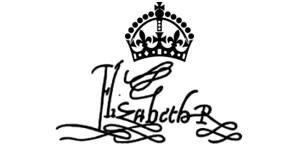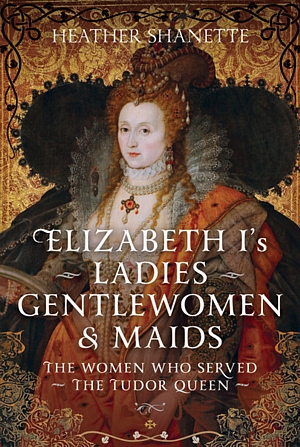
Elizabethan Religious Settlement
Before King Henry VIII quarrelled with the Pope over his divorce from Katherine of Aragon,
England had been a Catholic country for centuries. The King himself had been a loyal Catholic, defending the
'old faith' from the threat of the new Protestant religion, and had been styled "Defender of the Faith" by the Pope.
But when the Pope would not grant him a divorce from Katherine, a divorce Henry was desperate for as he had no son to
succeed him, Henry broke England away from the Catholic Church and made himself the head of a new church,
the Church of England.
As the break with Rome was for dynastic reasons rather than for religious ones, Henry remaining a Catholic at heart,
and the new Church of England was very similar to the Catholic Church. But there were some big changes. The power of the Pope
was not recognised in England, there were no Cardinals, and over the course of a few years Henry closed all the
monasteries and convents. Many of the monks and nuns were corrupt and wicked, so the government said, but in reality the
King had his eyes on the land and treasures of the abbeys. These he seized for himself in a process known as the
dissolution of the monasteries and became very rich as a result. Many of the monastic lands he gave to his friends and favourites,
making them very wealthy, and this generosity helped the King to win support for his new church. Many of those who did
not support the religious changes in the land were put to death, like Sir Thomas More.
When Henry VIII died his much longed for son, Edward, born to his third wife, Jane Seymour, became king. Having grown up in the
new religion, Edward was a devout Protestant, and his government made further changes to the religion of the land. They
ended the Latin Mass, allowed clergymen to marry, aswell as former monks and nuns who were
forbidden to do so by Henry VIII, and established a Book of Common Prayer. This book was a guide for worship in the
Church of England, providing words and prayers for services, including weddings and baptisms. It was revised in 1552.
Unfortunately for King Edward's government, which by 1553 was led by John Dudley, Duke of Northumberland, the new
religion was only really popular in court circles amongst the 'learned'. Most people in the land were still attached to
the 'old faith' and would gladly welcome its return. Even the King's half-sister, Princess Mary, daughter of
Katherine of Aragon and the country's official heir to the throne, was still a devout Catholic. This was a huge concern
to the government, who did not want Catholicism to return, so when King Edward became terminally ill, they
attempted to stop Mary becoming queen by scheming to place her cousin, Lady Jane Grey, on the throne instead. If Mary and
Elizabeth were excluded from the line of succession, then Lady Jane was the next heir under the terms of Henry VIII's
will. So Mary and Elizabeth were excluded, on the grounds that they were illegitimate, and when King Edward died, Lady Jane, a Protestant,
was proclaimed queen.
Mary successfully challenged Lady Jane for the throne and was soon crowned queen. As a Catholic, she restored the
'old faith', just as Edward's advisors had feared, and England was once again a Catholic country. All the reforms made by
her father and brother were undone and those who refused to comply, such as Thomas Cranmer, Archbishop of Canterbury,
were imprisoned or put to death. Mary wanted to restore monasteries and convents too, but given how many of the former lands had been given away, and how many of
the buildings had been destroyed, this was very difficult to achieve. Some religious communities were successfully
restored, however, and a number of monks and nuns resumed their former lives.
Although many were glad of the return of the faith they had grown up in, others were devastated. Many Protestants left the country,
especially when the Queen and her government starting burning reformists alive at the stake, whereas others plotted to
depose the Queen. One of these early plots, led by Sir Thomas Wyatt, resulted in Princess Elizabeth being imprisoned in the Tower of London. Mary's 'reign of terror' earned her
the epithet 'Bloody Mary'.
When Elizabeth became queen in the November of 1558, following Mary's death, she changed the country's religion again.
Like her brother, she had been raised in the Anglican Church of England, so it was this church that she reestablished in
the first weeks and months of her reign. For the age in which she lived, Elizabeth's personal religious views were
remarkably tolerant, and had the political circumstances been different, she may well have allowed Catholics to worship freely.
"I have no desire to make windows into men's souls," she once declared, believing "there is only one Christ, Jesus,
one faith. All else is a dispute over trifles." The Queen knew that most Catholics were loyal, and she knew that
some of the people around her were secretly Catholic, but she also knew that when it came down to it,
most devoted Catholics would choose to obey the Pope over her. This became a problem in 1570 when the new Pope, named Pius V, issued a Papal Bull in which he told
the Queen's subjects that it was unnecessary to follow her laws and they should attempt to remove her from the throne. From then on
Catholics were considered a great threat to the Queen and recusants (those who refused to go to church) faced severer
punishments.
The restoration of the Church of England by Elizabeth and her government is known as THE ELIZABETHAN RELIGIOUS SETTLEMENT.
This was done by two Acts of Parliament: the ACT OF SUPREMACY and the ACT OF UNIFORMITY.
ACT OF SUPREMACY
The Act of Supremacy made Elizabeth Supreme Governor of the Church of England. Many people did not considered it appropriate for a woman to be styled
'Head' of the church (as Henry VIII and Edward VI had been) so this title was a compromise. This Act also included an
oath of loyalty to the Queen that the clergy were expected to take. If they did not they would lose their office.
ACT OF UNIFORMITY
The Act of Uniformity was the foundation of the Elizabethan Church as it established a set form of worship.
The two Prayer Books of Edward VI were fused into one and were to be used in every church in the land. Church attendance on Sundays and holy
days was compulsory, with a twelve pence fine to be collected if people did not attend, the money to be given to the
poor. The wording of Holy Communion was vague, so that Protestants and Catholics alike could participate, and the
ornaments and vestments of the Church were retained.
Although the Act of Supremacy passed through Parliament without difficulty, the Act of Uniformity was much more controversial.
Many parliamentarians were still Catholic so there was much opposition. In the end, however, the Act of Uniformity passed by three votes and became law.





















